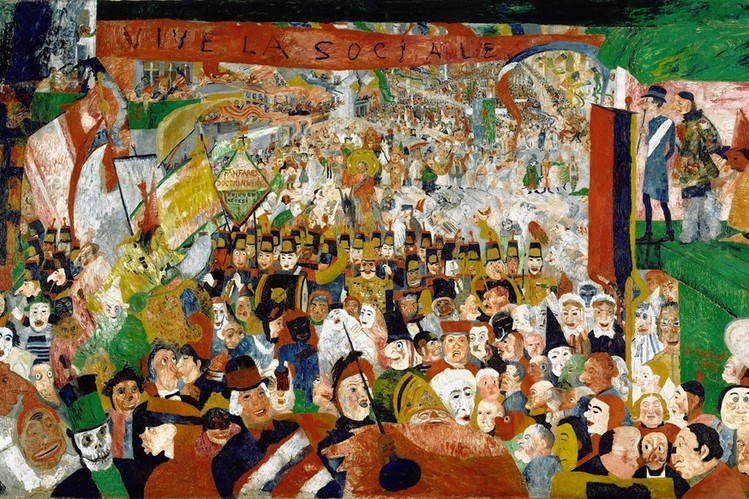Mark's account of the crucifixion records that darkness covered the land from noon until 3:00 p.m. on the day Jesus was crucified (Mark 15:33). The Tenebrae service echoes that darkness through the extinguishing of candles through the service. Rembrandt van Rijn has, through his habit of reworking printing plates, given us a visual image for that darkening.
Most people know Rembrandt as a painter, but he was equally known in his own time as a printmaker, working more than 300 prints during his lifetime. He was inspired by those who came before him, including Albrecht Durer, and owned a collection of other artists' prints. He did not often use the same subjects in his prints that he used for paintings, perhaps acknowledging that some subjects were more suitable for linear, drawing-like prints than for his painterly brushwork.
Prints, unlike paintings, produce multiple works of art. From a single plate a dozen, or a hundred, prints might be pulled. Value is retained by producing a limited number of prints (with each print numbered) and then scoring the plate (taking a tool and creating a big scratch across it) so that no other prints can be pulled from that plate. This insures a limited number of prints are available.
Rembrandt did not often do that.
Rather, he would go back in and rework a plate, adding, scraping away, repolishing, redrawing, offering a distinctly different vision of the same essential subject. He did this with a print called "The Three Crosses" from 1653.

Shown here are states iii and iv. State iii has dramatic lighting with all three figures on crosses clearly visible. Shadows lurk at the corners of the image while dozens of figures mill about. Two figures are shown walking toward the right corner of the composition, away from the scene. At the center is Christ on the cross, the placard above his head.
When the plate began to wear down, the artist polished off much of the composition. He kept the three figures on the cross but made significant changes. The light in state iv is even more dramatic than state iii. The thief on Christ's left (on the right of the composition as we look at it) is almost completely obscured in shadow, while we can still see highlights on the thief on Christ's right.

Additionally, the figure on horseback, the centurion who acknowledges that Jesus truly was God's son, is emphasized by the dark shadow behind him that offers contrast to the light figure of soldier and horse.
Both offer dramatic interpretations of the darkness over the land, but the two states together seem to capture the scene in a way that neither does alone. Often paintings seem to imagine the crucifixion as happening in isolation. Rembrandt's two versions look almost like stills from a film, showing us crowds that ebbed and flowed, showing us changing textures of light, implying the murmur of voices and the smell of people and animals. Rembrandt's changes bring to us the suffocating sense of a life almost extinguished. Rembrandt reminds us this is no staged tableau.
Both prints in the collection of the British Museum, London: http://www.britishmuseum.org/explore/highlights/highlight_objects/pd/r/rembrandt,_the_three_crosses.aspx
Food&Faith Matters looks at the traditional Good Friday food, hot cross buns. Click on the link below.






















